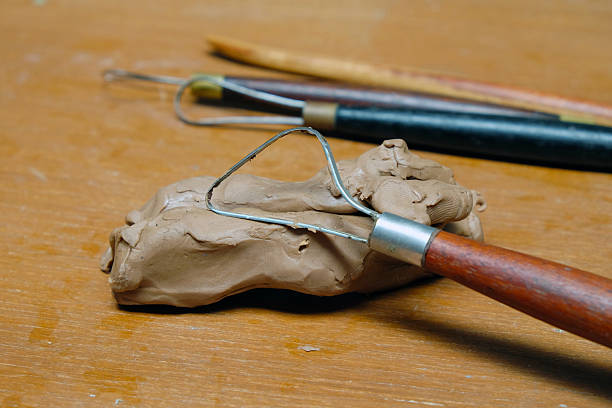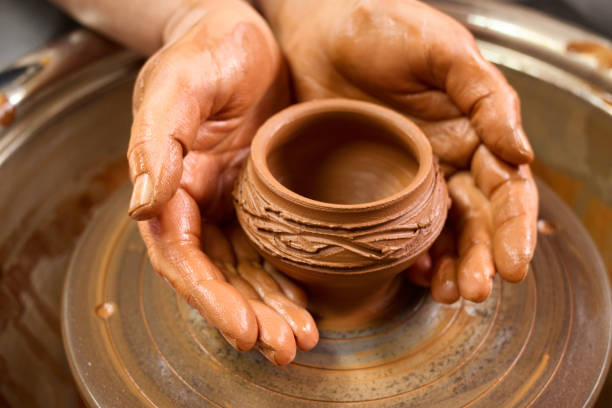While shops have long been using cemented carbide and HSS tools, ceramic composite—or cermet—tools have become increasingly popular. They offer higher machining speeds and better tool life than traditional tools.
In addition, silicon nitride-based ceramic grades such as NTK’s SX6 and SP9 have more than double the fracture toughness of alumina-based ceramics. This allows them to cut cast iron and nickel-based super alloys at high speeds.

1. Material
A ceramic tool’s material is the foundation that determines its performance. Different grades of machinable ceramic are available to meet the specific needs of various applications.
For example, a silicon nitride (Si3N4)-based ceramic known as SiAlON has high fracture toughness and hardness that remain stable even under elevated temperatures, making it ideal for machining difficult-to-cut materials such as nickel alloys. Similarly, whisker-reinforced ceramics based on titanium carbide have excellent thermal properties and resistance to sudden temperature changes.
Watch manufacturing requires tight tolerances and precise processes. Mid South Ceramics, explains that the key to high-quality watch components is precision. “Producing highly intricate components for the movements of a watch requires achieving tolerances in the micrometer range.
They tested various materials against each other by measuring machining forces and surface quality. The results demonstrated that the ceramic containing the highest percentage of silicon nitride and alumina produced the lowest machining forces and provided the best surface finish.
2. Hardness
What shops don’t know can hurt them, and when it comes to ceramic cutters, a lack of knowledge can lead to suboptimal performance and expensive failure. That’s why it is important for machinists to understand how ceramic cutters are designed and constructed, as well as recent developments that make them more attractive in many applications.
Hardness is a measure of the resistance of a material to localized deformation such as scratching, cutting or indentation. It is often related to other properties of a metal, such as tensile strength.
Some modern ceramic grades, such as polycrystalline cubic boron nitride (CBN), have excellent hot hardness and can be used at high cutting speeds, but their fracture toughness is low. However, dense sintered b-SiAlON has superior thermal shock resistance and fracture toughness. This means that it can be used in interrupted cuts and roughing applications where the cutting edge must endure frequent impact. It also offers better wear resistance than cemented carbide.

3. Temperature
For ceramic tools to work, they need to reach high temperatures in the cutting zone. This allows them to plasticize the material and displace it as chips are cut off, allowing for a more efficient machining process. It also helps keep the tool cool and reduces tool wear.
This is a major reason why ceramic tools have found their way into the production of hard-to-machine materials. They are able to do this while cutting at higher speeds than carbide, PCD and CBN.
The types of ceramics used in machining include pure oxide, mixed oxide and whisker reinforced materials. These are divided further into matrix materials, such as aluminium oxide or silicon nitride.
Typically, ceramics are sintered or powdered metallurgically. These are then formed into inserts with brazing. They can be offered in solid or indexable varieties and are popular in turning applications. However, it is important that end users understand how to use them in order to get the best results, says Howard. This includes ramping cuts, varying the DOC and reducing feed going into a corner.
4. Edge Geometry
Cutting edge geometry is critical to a ceramic tool’s performance. Sharper insert geometries generate higher feed normal forces compared to cemented carbide tools with rounded edges. However, they also reduce surface roughness and have lower cumulative process energy demand.
Those benefits make it attractive to use ceramic tools for difficult-to-machine alloys. But, if not implemented correctly, they can lead to tool breakage and poor machinability.
One example of this comes from Scottsdale, Pa.-based Better Edge, which makes specialized carbide end mills for challenging aerospace materials. The company recently received an order to grind a six-flute, half-inch diameter, short-LOC ceramic insert for a customer.
Using a carbide tool path would force the insert into corners, but that is likely to break the ceramic. Instead, a more judicious approach is recommended: Reduce the feed rate by 50% in those areas of the insert to prevent the tool from applying forces that are likely to break it. This can be done without changing the overall feed rate. The result is a better-machined part and less pressure on the cutting edge.
5. Surface Finish
The big thing with ceramics is they conduct heat very well, Howard explains. This allows them to run much faster than common tools made from carbide, CBN or PCD. The fast speeds cut a lot of time off of cycle times and can make it possible to run the workpiece at a lower feed rate and get a better finish.
As a result, these tools can make more parts in a day than traditional high-speed steel and carbide tools. The resulting improved part surface finish can also reduce the need for costly post-processing grinding.
But even in shops that know about the benefits of ceramic cutting, they might not be able to take advantage of them because their equipment can’t reach the speed limits these tools can support. A recent development may change that. Clay tools can withstand higher speeds than traditional ceramics and has the added benefit of conducting heat even more efficiently. This can give ceramics a boost when cutting difficult-to-machine materials such as titanium and aerospace alloys. It can help them cut more parts in a day and extend their tool life.





